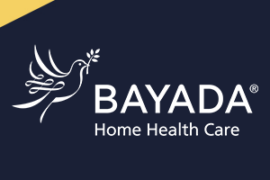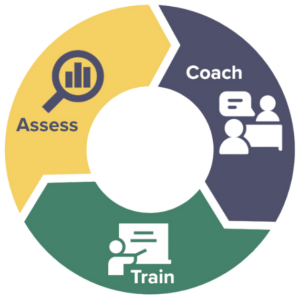It sounds perfunctory, like a collective pout or impromptu global strike: “The Great Resignation” or “The Big Quit.” Somehow, the global economy finds itself with more job openings than people to fill the roles, due in part to employees’ reluctance to return to traditional, 9-5 jobs after more than a year of pandemic upheaval.
This phenomenon is more than a whim though. It’s an awakening rooted in unprecedented circumstances. Before we talk about how employers can counteract employee turnover, let’s talk about what your business is up against.
It’s been a century since the last global pandemic, but never before has such a devastating health crisis coincided with such a tech-savvy global economy. COVID-19 broke into our communities at a unique inflection point when video conferencing, social media, and other software advancements made it possible for the world to remain moderately connected despite social distancing and stay-at-home mandates.
In the face of so much disruption to our school, home, and work routines, there were still moments of connection and hope. With a little flexibility, thought, and ingenuity, employers and employees could work together to create work environments that were innovative and malleable, not simply based on traditional models.
Many employees worked from home without the usual access to childcare and support networks. Distributed teams navigated time zones and cut all extraneous operating costs. CEOs collaborated with folks across the org chart to come up with creative solutions to distributed work models. Without normal commutes, watercooler talk, or in-person team building, multitudes adjusted to a new normal that required extra communication, resilience, and understanding.
Now, some are finding it difficult to simply switch back to the way things were before.
What can you do to prevent a wave of departures from your team? Communicate often and candidly about what you’re doing to ensure they feel supported, included, and encouraged. As The Diversity Movement CEO, Donald Thompson, explains in his WRAL Techwire article about the one thing executives can do to avoid the Great Resignation, “the real way to keep your team on board is to invest in who they are as people, personalize their employee experience and create an employee-focused culture of work.”
Here are a few actionable tips about how to avoid the Great Resignation in your business.
Acknowledge the angst.
Harvard Business School found that 80% of those who are working remotely don’t want to return to the office full time. Another online survey said that 30% of workers would quit their job if asked to do so.
No worker is returning to a workforce that remains unchanged by COVID-19. Those changes can mean fear or anxiety about how re-entry may impact health and wellness, both physically and mentally. Approach those sentiments with an eye toward employee retention. Name the elephant in the room and be transparent about your strategies for both re-entry and COVID-19 mitigation.
Create spaces where employees can voice their concerns and unique family circumstances.
Many employees have children who are too young to be eligible for COVID vaccines. Others live with or around immunocompromised individuals. Create avenues where employees with extenuating circumstances can express their concerns and request accommodation or flexible work policies. Avoid enacting one-size-fits-all workplace policies which typically only fit the silent majority.
Invest in mental health services to help employees process change.
Even if offered only on a temporary basis, consider either on-site therapy resources or virtual therapy visits that employees can utilize as part of their benefits package.
Consider a hybrid model.
Over half (61%) of employees prefer a mixed work model where they can spend a few days working from home and come into the office only when truly necessary to access resources or work with their teams.
Be transparent about safety precautions and updates to health protocols.
Uncertainty continues around COVID-19 variants and other health concerns. Be clear with your employees about each step you are taking to make the office a clean, healthy, and safe place to be.
Provide non-performative support.
Say it with us: tangible benefits. As an employee-focused organization, it’s critical that you look beyond foundational, baseline compensation packages. Since the U.S. doesn’t offer or mandated social support for employees, it’s up to companies to make those benefits decisions. If you aren’t invested in corporate social responsibility already, now is the time to start. Create customized employee benefits packages that express your corporate values and culture, then use those benefits as an opportunity to attract the best possible talent.
If you can’t provide paid family leave, partner with startups who can. If you’re finding that in-office work means added expenses for transit and/or childcare, offset those costs with stipends, or lessen the burden with other incentives. If you can’t necessarily adopt a work-from-home model, enhance compensation packages for hourly, in-person essential workers by providing lucrative benefits like debt-free education. For example, Target is providing employees with free education in partnership with Guild, which seeks to close the education gap while folks are on the job.
Get comfortable with the intangibles.
Flexibility may not be a measurable asset (yet), but it’s a benefit to work culture that employees are demanding after nearly two years of community, familial, and professional upheaval due to the COVID-19 pandemic. These last two years have forced countless parents, students, and employees to prioritize their needs as they attempted to care for themselves and their dependents with limited resources and almost no community to lean on. That process yielded startling realizations and revealed one long-held truth. time is (still) money.
An 80-year longitudinal study by Harvard University found that what keeps us healthy and happy over a lifetime are quality relationships. “Good genes are nice,” the Harvard Gazette says, “but joy is even better.” Study participants revealed that tending to relationships had a powerful effect on health—something that many employees may have had the chance to either reflect on or prioritize in the past year and a half. How can you use these findings to set your company apart?
Don’t just leave room for joy; create a culture where your employees can actively pursue it.
This may mean making small departures from traditional benefits packages by offering regular afternoons off or three-day weekends at predictable intervals. It may also mean more intentional conversations throughout the recruitment process plus external marketing to shed a light on all the things your business is doing to create an employee-focused workplace culture of personalization, flexibility, and care.
At its root, work offers a way for people to build their own success, provide for their families, and create a better world. But, if we want new employees to choose us and current employees to stick around, we have to be willing to adapt to their needs, especially in the wake of these last few turbulent years. To avoid the Great Resignation in your company, be flexible, be forward-thinking, and be ready to listen. Your employees are ready to tell you what they need.














